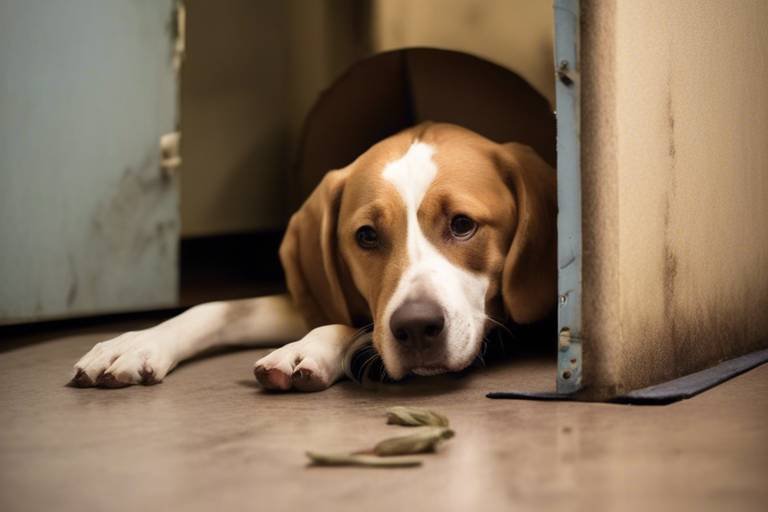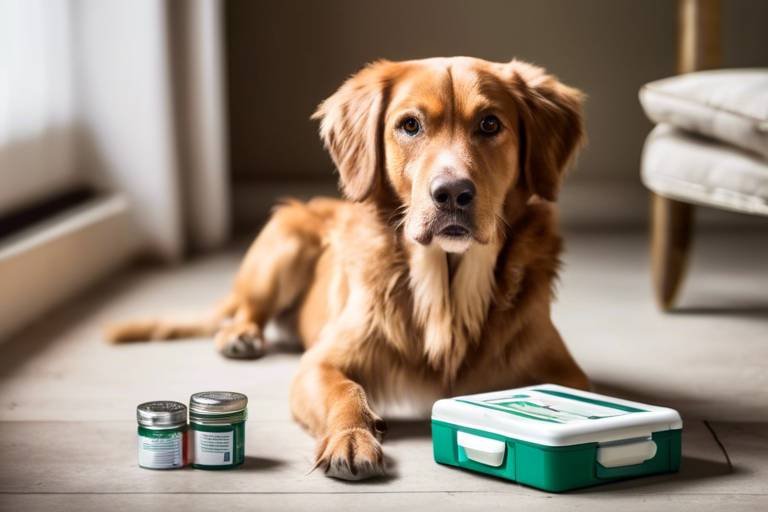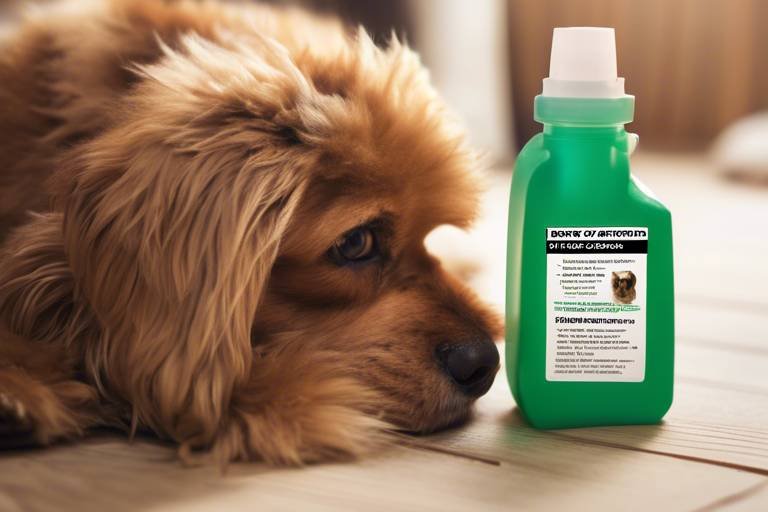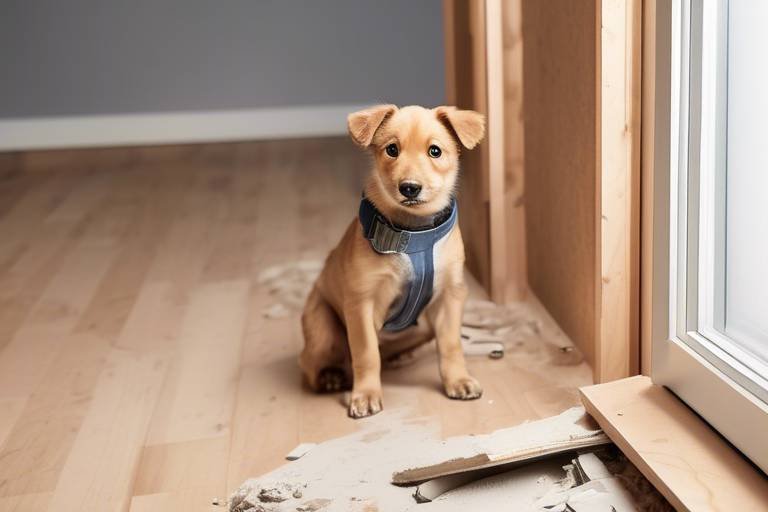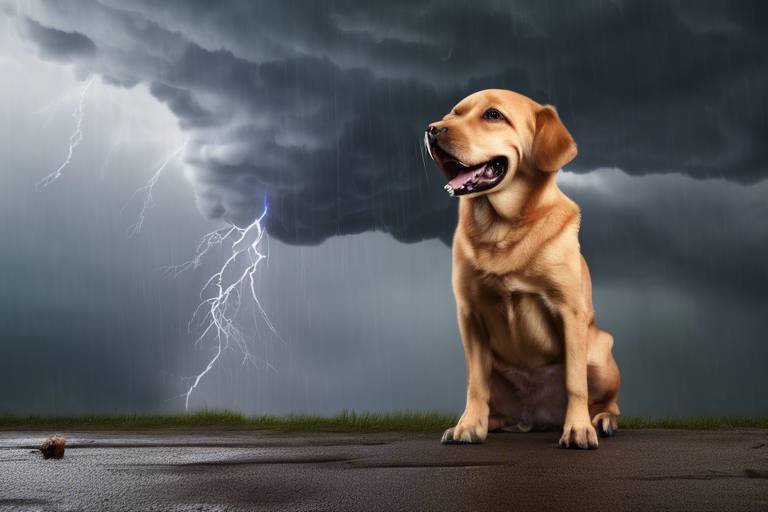What to Do If Your Pet Has a Broken Tooth
Discovering that your beloved pet has a broken tooth can be a heart-wrenching experience. As a pet owner, you want nothing but the best for your furry friend, and a dental injury can raise a lot of questions and concerns. What should you do next? How can you help your pet? This article provides comprehensive guidance on identifying, managing, and treating a broken tooth in pets, ensuring their comfort and health. From recognizing symptoms to exploring treatment options, we’ve got you covered, so you can act swiftly and effectively.
Identifying the signs of a broken tooth in your pet is crucial for timely intervention. Pets can’t tell us when something’s wrong, so it’s up to us to be their voice. Common symptoms of a broken tooth may include:
- Difficulty Eating: If your pet suddenly becomes picky with food or struggles to chew, it might be a sign of dental pain.
- Excessive Drooling: Increased saliva production can indicate discomfort or pain.
- Signs of Pain: Watch for behaviors like pawing at the mouth, whining, or reluctance to play.
Being observant and proactive can make a world of difference in your pet’s recovery, so don’t ignore these signs!
Knowing what to do immediately after discovering a broken tooth can help alleviate your pet's discomfort. While it’s essential to consult a veterinarian, there are basic first aid measures you can take at home:
- Keep Calm: Your pet may be anxious, so try to keep the environment calm.
- Examine the Mouth: Gently check for any visible fractures or bleeding, but be cautious not to cause further injury.
- Provide Soft Food: If your pet is willing to eat, offer soft food to minimize discomfort.
These steps can help keep your pet comfortable until professional help is available.
Understanding the severity of the break is essential. This involves evaluating the extent of the damage and looking for specific indicators. For example, is the tooth completely broken, or is it just chipped? Are there any signs of bleeding or swelling? A quick assessment can help you provide valuable information to your veterinarian.
Different types of fractures require different approaches. Here’s a quick overview:
| Type of Fracture | Description | Treatment |
|---|---|---|
| Chipped Tooth | A small piece of the tooth has broken off. | Polishing or bonding may be recommended. |
| Fractured Crown | The top part of the tooth is damaged. | Root canal or extraction may be necessary. |
| Root Fracture | The fracture extends below the gumline. | Extraction is often required. |
Infection can complicate a broken tooth, making it critical to recognize the signs early. Look for:
- Swelling: Noticeable swelling around the mouth or jaw.
- Discharge: Pus or any unusual discharge from the mouth.
- Foul Odor: A bad smell emanating from your pet's mouth can indicate infection.
Prompt treatment is vital to prevent further complications, so don’t hesitate to contact your veterinarian if you notice any of these symptoms.
When in doubt, consulting a veterinarian is always the best course of action. During your visit, expect a thorough examination. Your vet will likely perform X-rays to assess the damage and determine the best treatment plan. It’s helpful to provide as much information as possible about your pet’s symptoms and behavior.
There are various treatment options for a broken tooth, depending on the severity of the injury. Possible treatments include:
- Extraction: In cases where the tooth is beyond repair, extraction may be necessary.
- Dental Procedures: Root canals or crowns may be options for less severe fractures.
Each treatment has its pros and cons, so discussing these with your veterinarian will help you make an informed decision.
Preventing dental issues in pets is crucial for their long-term health. Regular dental check-ups and cleanings can significantly reduce the risk of broken teeth. Additionally, consider providing dental treats or toys designed to promote oral health. These simple steps can go a long way in keeping your pet’s teeth strong and healthy.
Good dental hygiene is key to preventing broken teeth. Here are some practical tips:
- Brush Regularly: Aim to brush your pet’s teeth at least a few times a week.
- Provide Chew Toys: Chewing can help clean teeth and strengthen gums.
- Monitor Diet: A balanced diet contributes to overall dental health.
By incorporating these habits into your pet's routine, you can help prevent dental problems before they start.
Q: What should I do if my pet breaks a tooth?
A: First, stay calm and assess the situation. Check for visible damage and contact your veterinarian for advice.
Q: Can a broken tooth heal on its own?
A: It’s unlikely. Most broken teeth require veterinary intervention to prevent pain or infection.
Q: How can I prevent my pet from breaking a tooth?
A: Regular dental care, providing appropriate chew toys, and monitoring their diet can help maintain strong teeth.
Q: What are the signs that my pet needs dental care?
A: Look for bad breath, difficulty eating, excessive drooling, or visible tartar buildup.

Recognizing the Symptoms
Identifying the signs of a broken tooth in your pet is crucial for timely intervention. Pets, much like humans, can experience a range of discomfort when their teeth are damaged. One of the first things you might notice is a change in their eating habits. If your furry friend suddenly seems to struggle with their food or is avoiding their favorite treats, it could be a red flag. Animals are instinctive creatures, and if they feel pain while chewing, they may opt for softer foods or even refuse to eat altogether.
Another common symptom is excessive drooling. While some drooling can be normal, particularly in dogs when they are excited or anticipating a treat, a sudden increase in drool can indicate that something is amiss. If you notice that your pet is drooling more than usual, especially if it’s accompanied by other signs, it’s time to take a closer look.
Additionally, keep an eye out for signs of pain or discomfort. Your pet might display behaviors such as:
- Whimpering or whining when chewing
- Fidgeting or pawing at their mouth
- Avoiding play or interaction
- Changes in mood, like increased irritability
Sometimes, you might even notice physical signs in your pet’s mouth. Look for swelling around the gums or any visible fractures in the teeth. If you see any unusual discoloration or if the tooth appears to be chipped or broken, it’s essential to act quickly. Remember, your pet cannot communicate their pain verbally, so being observant is key.
In summary, recognizing the symptoms of a broken tooth can be a lifesaver for your pet. If you notice any of these signs, don’t hesitate to consult with your veterinarian. Early intervention can prevent more serious complications and ensure your furry friend remains happy and healthy.
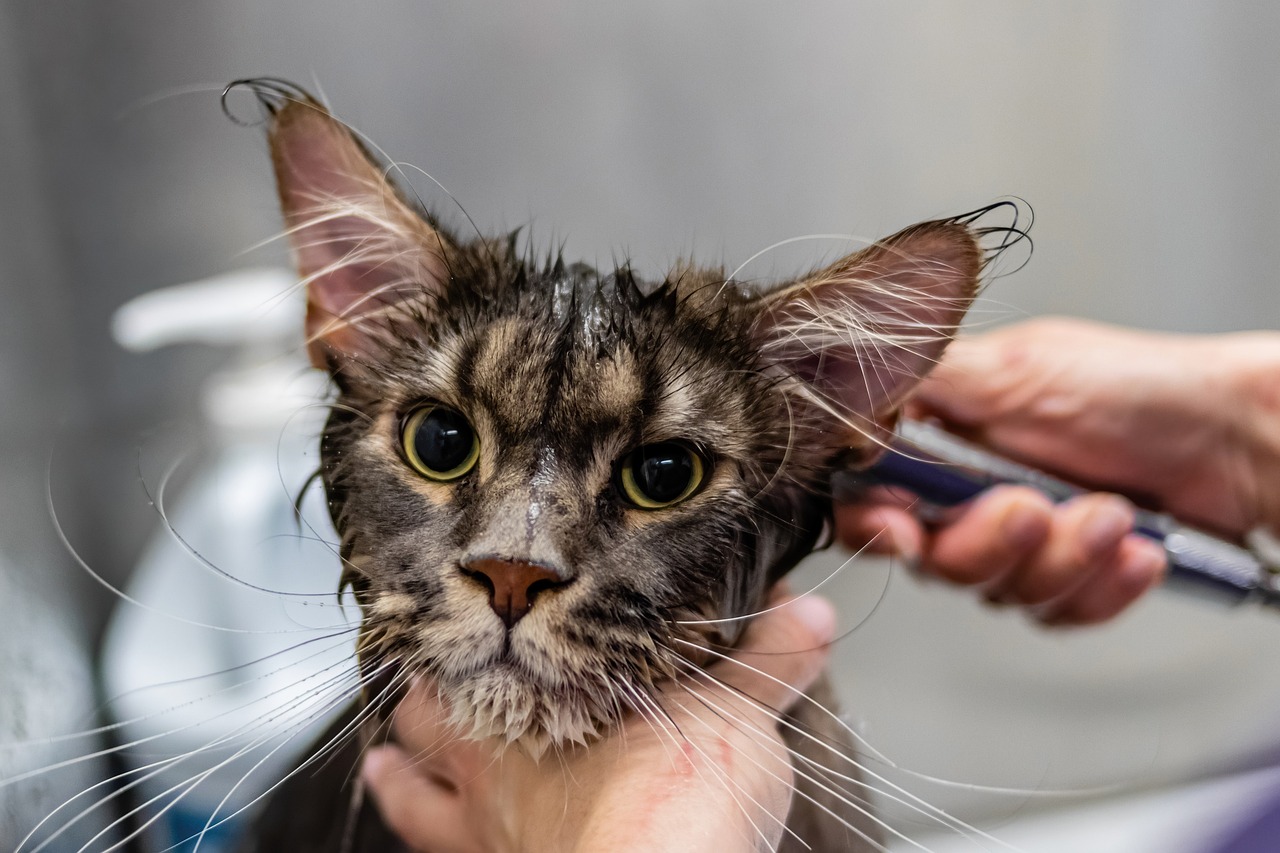
Immediate First Aid Steps
When you discover that your beloved pet has a broken tooth, it can be a moment filled with worry and concern. Your first instinct may be to panic, but staying calm is crucial. The immediate steps you take can significantly impact your pet's comfort and health. First, examine the situation carefully. Is your pet in distress? Are they bleeding? These initial observations will guide your next actions.
If you notice any bleeding, it’s essential to control it. You can do this by applying gentle pressure with a clean cloth or gauze. Hold it against the area for a few minutes until the bleeding stops. Remember, never use your fingers directly to apply pressure, as this might cause further injury to your pet or yourself. Also, keep your pet calm during this process; stress can exacerbate the situation.
Next, assess your pet's behavior. Are they showing signs of pain, such as whining, pawing at their mouth, or refusing to eat? These behaviors can indicate that the break is more severe than it appears. If your pet is in significant pain, it’s best to limit their movement to prevent further injury. You might want to create a cozy space for them to rest, away from other pets or distractions.
While waiting for veterinary assistance, consider the following immediate first aid measures:
- Keep your pet hydrated: Offer water, but don't force them to drink if they're reluctant.
- Avoid hard food: If your pet is willing to eat, provide soft food to prevent further damage to the broken tooth.
- Monitor for signs of infection: Watch for swelling, discharge, or changes in behavior, as these may indicate an infection.
After you’ve taken these steps, it’s time to consult your veterinarian. They will perform a thorough examination and determine the best course of action for treatment. Remember, timely intervention is key to preventing complications!
In summary, while a broken tooth can be alarming, knowing how to respond can make all the difference. By following these immediate first aid steps, you can help ensure your pet remains as comfortable as possible until professional help is available.
Q1: How can I tell if my pet's tooth is broken?
A1: Look for signs like difficulty eating, excessive drooling, or visible damage to the tooth. If your pet seems in pain, it’s best to consult a veterinarian.
Q2: What should I do if my pet is bleeding from the mouth?
A2: Apply gentle pressure with a clean cloth or gauze to control the bleeding and seek veterinary care as soon as possible.
Q3: Can I give my pet pain relief medication?
A3: Never give your pet human medications without consulting a veterinarian, as some can be harmful or even fatal.
Q4: How can I prevent my pet from having dental issues in the future?
A4: Regular dental check-ups, proper dental hygiene, and a balanced diet can help maintain your pet's oral health.
Assessing the Damage
When you discover that your furry friend has a broken tooth, the first instinct is to panic. However, staying calm and assessing the damage is crucial for determining the next steps. Understanding the severity of the break can help you decide whether immediate veterinary care is necessary or if you can wait until your next appointment. Here are some key points to consider while evaluating the situation:
- Type of Break: Different types of fractures can occur, from minor chips to severe breaks that expose the pulp of the tooth. A minor chip may not require immediate attention, whereas a severe fracture could lead to pain and infection.
- Location of the Tooth: The location of the broken tooth matters. For example, a broken canine tooth (the long, pointed ones) can affect your pet's ability to eat and may cause more pain than a broken molar.
- Behavioral Changes: Pay attention to how your pet behaves. If they are avoiding food, chewing on one side of their mouth, or showing signs of discomfort when you touch their face, these could be indicators of more serious damage.
To further assist in your assessment, look for visible signs of damage such as:
- Cracks or chips in the tooth
- Swelling around the gums
- Excessive drooling or blood in the saliva
It's essential to remember that some dental injuries may not be immediately visible. If your pet is showing signs of pain but the damage isn't obvious, a veterinarian's expertise is invaluable. They can perform a thorough examination, possibly even using X-rays to get a detailed view of the tooth's condition beneath the surface.
In conclusion, assessing the damage of a broken tooth involves a careful look at the type and location of the fracture, as well as your pet's behavior and any visible signs of injury. Your observations will be crucial when you consult your veterinarian, ensuring your pet receives the appropriate care as soon as possible.
Types of Tooth Fractures
When it comes to our furry friends, a broken tooth can be more than just a minor inconvenience; it can lead to significant discomfort and health issues if not addressed promptly. Understanding the different types of tooth fractures is crucial for identifying the best course of action for your pet. Generally, tooth fractures can be categorized into several types, each with its own implications for treatment and recovery.
The most common types of tooth fractures include:
- Enamel Fracture: This is the most superficial type of fracture, affecting only the outer layer of the tooth. While it may not cause immediate pain, it can expose the underlying layers, leading to sensitivity or infection over time.
- Dentin Fracture: This type of fracture extends deeper into the tooth, affecting the dentin layer beneath the enamel. Pets may experience pain and sensitivity, especially when eating or drinking.
- Pulp Exposure: When the fracture goes all the way to the pulp chamber, it can cause severe pain and is at high risk for infection. This type of fracture requires immediate veterinary attention.
- Root Fracture: A root fracture involves the part of the tooth that is below the gum line. These fractures can be particularly tricky, as they may not be visible without X-rays and can lead to serious complications if left untreated.
Each type of fracture requires a different approach to treatment. For instance, an enamel fracture may simply need monitoring, while a pulp exposure might necessitate a root canal or extraction. It’s important to assess not only the type of fracture but also the overall health of your pet's teeth and gums. In some cases, additional dental issues may be present, complicating the situation further.
When evaluating a broken tooth, consider the following factors:
| Type of Fracture | Symptoms | Treatment Options |
|---|---|---|
| Enamel Fracture | Minimal pain, possible sensitivity | Observation, dental sealant |
| Dentin Fracture | Pain during chewing, sensitivity | Possible filling or crown |
| Pulp Exposure | Severe pain, swelling, infection signs | Root canal or extraction |
| Root Fracture | Variable pain, possible gum swelling | Extraction, possible surgical intervention |
Recognizing the type of fracture is essential, as it guides the treatment plan and helps ensure your pet’s comfort and health. If you suspect your pet has a broken tooth, don’t hesitate to reach out to your veterinarian. They can provide a thorough examination and recommend the best course of action based on the specific type of fracture and your pet's overall health.
Signs of Infection
When your furry friend suffers a broken tooth, it's not just the fracture that you need to worry about; infection can quickly become a serious concern. Understanding the signs of infection is crucial for ensuring your pet's health and comfort. One of the first symptoms to watch for is swelling around the affected area. If you notice any puffiness in your pet's gums or face, take it as a red flag. This swelling often indicates that bacteria have invaded the area, leading to inflammation.
Another common sign of infection is discharge. If you see any pus or unusual fluid coming from your pet's mouth, it's a clear indication that something is amiss. This discharge can be foul-smelling and may accompany other symptoms, such as a noticeable change in your pet's breath. Speaking of breath, halitosis, or bad breath, can be a telltale sign of dental issues, including infections. If your pet's breath suddenly smells worse than usual, it might be time to investigate further.
Additionally, keep an eye on your pet's eating habits. If they suddenly become reluctant to eat or drink, it could be due to pain or discomfort caused by an infection. Pets are quite good at hiding their pain, so if you notice any changes in their appetite, it’s worth considering a veterinary visit. Behavioral changes can also be a clue; if your usually playful pet becomes withdrawn or irritable, it may be a sign of underlying pain or infection.
Finally, fever can be another indicator of infection. If your pet seems unusually lethargic or has warm skin, it might be worth checking their temperature. A normal temperature for pets typically ranges from 100.5°F to 102.5°F. If you suspect your pet has a fever, it's crucial to consult your veterinarian as soon as possible.
To summarize, look out for these key signs of infection:
- Swelling around the affected area
- Discharge or pus from the mouth
- Bad breath (halitosis)
- Changes in eating habits
- Behavioral changes such as lethargy or irritability
- Possible fever
Recognizing these signs early can make a significant difference in your pet's recovery. If you notice any of these symptoms, don’t hesitate to contact your veterinarian. Remember, timely action can prevent more serious complications down the line, ensuring your beloved pet stays healthy and happy!
Q: What should I do if I suspect my pet has a broken tooth?
A: If you suspect your pet has a broken tooth, observe for symptoms like pain, difficulty eating, or swelling. It's best to consult your veterinarian for an accurate diagnosis and treatment plan.
Q: Can a broken tooth heal on its own?
A: In some cases, a broken tooth may not heal properly on its own and can lead to complications such as infection. Professional veterinary care is recommended to assess the damage and determine the best course of action.
Q: How can I prevent my pet from having dental issues?
A: Regular dental check-ups, professional cleanings, and maintaining good oral hygiene at home can help prevent dental issues in pets. Providing dental chews and proper diet also contributes to their overall dental health.
Consulting Your Veterinarian
When you suspect that your pet has a broken tooth, the first and most important step is to consult your veterinarian. It’s easy to feel overwhelmed in such situations, but remember that your vet is your best ally in ensuring your furry friend receives the care they need. During your visit, the veterinarian will conduct a thorough examination of your pet's mouth, checking for any visible fractures, infections, or other dental issues. This is where their expertise really shines, as they can identify problems that may not be immediately apparent to you.
While you’re there, don’t hesitate to ask questions! You might wonder about the severity of the injury, potential treatment options, or even how to prevent similar issues in the future. Here are some key points you might want to discuss:
- What type of fracture does my pet have? Understanding the nature of the fracture can help you grasp the treatment options available.
- What are the recommended treatments? Knowing the pros and cons of each option can help you make informed decisions.
- How long will recovery take? This can help you prepare for any necessary adjustments in your pet's routine.
- Are there signs of infection? Your vet can guide you on what to watch for after treatment.
After the examination, your veterinarian may recommend diagnostic tools like X-rays to get a clearer picture of the damage. This step is crucial, as it allows the vet to see not only the tooth but also the surrounding bone structure, which can be affected by a fracture. Based on their findings, they will outline a treatment plan tailored to your pet’s specific needs.
In some cases, treatment may involve simple procedures like smoothing out a rough edge of a broken tooth, while more severe fractures may require extraction or even root canal therapy. Whatever the case may be, your vet will ensure that your pet is as comfortable as possible throughout the process. Remember, dental health is not just about preventing pain; it’s about maintaining your pet’s overall health and happiness.
So, don’t wait too long to seek help. The sooner you consult with your veterinarian, the better the outcome for your beloved pet. After all, a healthy smile is a happy smile!
Here are some common questions pet owners have regarding broken teeth:
- How can I tell if my pet has a broken tooth? Look for signs like difficulty eating, excessive drooling, or visible damage to the teeth.
- What should I do if my pet has a broken tooth? Contact your veterinarian immediately for an assessment and treatment options.
- Can a broken tooth heal on its own? While some minor fractures may not require treatment, most broken teeth need veterinary intervention to prevent complications.
- How can I prevent my pet from getting broken teeth? Regular dental check-ups, appropriate chew toys, and a balanced diet can help maintain your pet's dental health.

Treatment Options Available
When it comes to treating a broken tooth in your beloved pet, it's essential to understand that the right approach depends on the severity of the injury. Just like humans, pets can experience varying degrees of dental trauma, and each situation requires a tailored response. The first step in determining the proper treatment is to consult with your veterinarian, who can assess the damage and recommend the best course of action.
For minor fractures, where the tooth is chipped but the pulp remains intact, your vet may suggest a simple dental bonding procedure. This involves applying a special resin to the affected area, which not only restores the tooth's appearance but also protects it from further damage. However, if the fracture is more severe and exposes the pulp, your pet may require a root canal treatment. This procedure is designed to save the tooth by removing the infected pulp, cleaning the interior, and sealing it to prevent future infections.
In cases where the tooth is irreparably damaged, extraction may be the best option. While the thought of removing a tooth can be daunting, it's important to remember that pets can adapt well to missing teeth, especially if they are older or have other dental issues. Your veterinarian will ensure that the extraction is done under anesthesia, minimizing pain and stress for your furry friend.
Here's a quick summary of the treatment options:
| Treatment Type | Description | Best For |
|---|---|---|
| Dental Bonding | Application of resin to repair minor chips. | Minor fractures with intact pulp. |
| Root Canal | Removal of infected pulp and sealing of the tooth. | Severe fractures exposing the pulp. |
| Extraction | Removal of the damaged tooth. | Irreparable damage or severe decay. |
After treatment, your veterinarian will likely provide you with guidelines for post-operative care. This may include dietary adjustments, pain management, and follow-up appointments to ensure your pet is healing properly. Remember, maintaining good dental health is an ongoing process. Regular check-ups and cleanings can help prevent future dental issues and keep your pet's smile bright.
Q: How can I tell if my pet needs dental treatment?
A: Look for signs such as difficulty eating, excessive drooling, or any visible damage to the teeth. If you notice any of these symptoms, consult your veterinarian.
Q: Is dental surgery safe for pets?
A: Yes, dental surgeries are generally safe when performed by a qualified veterinarian. They will use anesthesia and monitor your pet throughout the procedure to ensure their safety.
Q: How can I prevent dental issues in my pet?
A: Regular dental check-ups, a proper diet, and at-home dental care such as brushing can significantly reduce the risk of dental problems.
Preventive Care Strategies
Preventing dental issues in your pet is not just a good idea; it's essential for their overall health and happiness. Just like humans, pets can suffer from various dental problems, including broken teeth, if their oral health is neglected. So, how can you ensure your furry friend maintains a healthy smile? Let’s dive into some effective preventive care strategies that can save you from the stress of emergency vet visits!
First and foremost, regular dental check-ups with your veterinarian are crucial. These visits allow for professional cleanings and early detection of potential issues before they escalate. Think of it as a routine maintenance check for your pet's mouth! During these check-ups, your vet can also provide tailored advice based on your pet's specific needs.
Another important aspect of preventive care is dental hygiene at home. Just because your pet can’t brush their teeth doesn’t mean they don’t need it! Regular brushing can significantly reduce the buildup of plaque and tartar. Here are some tips to help you get started:
- Use a toothbrush and toothpaste specifically designed for pets.
- Start slowly; let your pet get used to the toothbrush before diving into the actual brushing.
- Make it a fun experience! Reward your pet with treats or praise to encourage cooperation.
Moreover, consider incorporating dental treats and toys into your pet's routine. These not only help clean teeth but also keep your pet entertained. Look for products that are designed to promote dental health, as they can be quite effective in reducing plaque and tartar buildup.
Lastly, be mindful of your pet's diet. A balanced diet rich in nutrients can contribute to better oral health. Some pet foods are specifically formulated to promote dental health, so consult your veterinarian for recommendations. It's like feeding your pet a buffet of dental care right on their plate!
In summary, preventive care strategies are all about being proactive. Regular vet check-ups, at-home dental hygiene, engaging dental treats, and a balanced diet can make a world of difference. By investing a little time and effort into your pet's dental health, you can help prevent broken teeth and other dental issues, ensuring they live a happy, healthy life.
Q: How often should I brush my pet's teeth?
A: Ideally, you should brush your pet's teeth daily. However, even brushing a few times a week can make a significant difference!
Q: Are dental treats effective?
A: Yes! Dental treats can help reduce plaque and tartar buildup. Just make sure to choose high-quality products designed for dental health.
Q: What are the signs that my pet needs dental care?
A: Common signs include bad breath, difficulty eating, excessive drooling, or visible tartar buildup. If you notice any of these, it's time to consult your vet.
Q: Can I use human toothpaste for my pet?
A: No! Human toothpaste contains ingredients that can be harmful to pets. Always use toothpaste specifically formulated for pets.
Dental Hygiene Tips for Pets
Maintaining your pet's dental hygiene is not just a chore; it's a vital part of their overall health and well-being. Just like humans, pets can suffer from dental diseases that may lead to serious health issues if left untreated. So, how do you ensure your furry friend has a sparkling smile and healthy gums? Here are some essential tips that can help keep your pet's mouth clean and healthy.
First and foremost, regular brushing is key. While it might sound daunting, getting your pet accustomed to having their teeth brushed can make a world of difference. Start with a soft-bristled toothbrush designed for pets and a toothpaste formulated specifically for them—never use human toothpaste, as it can be harmful to pets. Aim to brush their teeth at least two to three times a week. This routine can help remove plaque and prevent tartar buildup, which is the leading cause of dental disease.
Additionally, consider incorporating dental treats and toys into your pet's routine. These products are designed to help clean teeth while your pet chews, effectively reducing plaque and tartar. Look for treats that have the Veterinary Oral Health Council (VOHC) seal of approval, as they have been tested for their effectiveness in promoting dental health. However, remember that treats should not replace regular brushing; they are a supplementary measure.
Another great habit to develop is regular veterinary dental check-ups. Just like you would visit your dentist, your pet needs their teeth checked by a professional. During these visits, your veterinarian can perform a thorough cleaning and check for any signs of dental disease or abnormalities. It's a proactive step that can save your pet from pain and discomfort down the line.
Lastly, don't underestimate the importance of diet in maintaining dental health. Feeding your pet a balanced diet, rich in nutrients, can contribute to healthier teeth and gums. Some pet foods are specifically formulated to promote oral health, so consult your vet for recommendations tailored to your pet's needs. Hydration is equally important; make sure your pet has access to fresh water at all times, as this can help wash away food particles and bacteria.
In summary, keeping your pet's teeth healthy requires a combination of regular brushing, dental treats, professional check-ups, and a proper diet. By incorporating these practices into your pet's routine, you can help ensure they enjoy a lifetime of good dental health and a happy, pain-free life.
Here are some common questions pet owners have regarding dental hygiene for their furry friends:
- How often should I brush my pet's teeth? Ideally, you should brush your pet's teeth at least two to three times a week. Daily brushing is even better!
- Can I use human toothpaste for my pet? No, you should never use human toothpaste as it can be toxic to pets. Always use toothpaste specifically designed for pets.
- What are the signs of dental disease in pets? Common signs include bad breath, difficulty eating, swollen gums, and excessive drooling. If you notice any of these symptoms, consult your veterinarian.
- Are dental treats effective? Yes, dental treats can help reduce plaque and tartar buildup, but they should not replace regular brushing.
- How often should my pet have dental check-ups? It's recommended to have your pet's teeth checked at least once a year, but some pets may require more frequent visits based on their dental health.
Frequently Asked Questions
- What should I do if I suspect my pet has a broken tooth?
If you think your pet has a broken tooth, the first step is to observe their behavior. Look for signs like difficulty eating, excessive drooling, or any signs of pain. It's essential to consult your veterinarian as soon as possible for a proper assessment and treatment plan.
- How can I tell if my pet's broken tooth is infected?
Signs of infection can include swelling around the mouth, pus or discharge from the gums, bad breath, and increased pain or discomfort. If you notice any of these symptoms, it's crucial to seek veterinary care immediately to prevent further complications.
- What are the treatment options for a broken tooth in pets?
Treatment options vary depending on the severity of the fracture. They may include dental bonding, root canals, or extraction of the broken tooth. Your veterinarian will recommend the best course of action based on their examination.
- Can I perform first aid at home for my pet's broken tooth?
While it's important to keep your pet comfortable, you should avoid trying to treat the injury yourself. You can rinse your pet's mouth with warm water to help clean it, but always follow up with a visit to the veterinarian for professional care.
- How can I prevent my pet from getting broken teeth in the future?
Preventive care is key! Regular dental check-ups, providing appropriate chew toys, and maintaining good oral hygiene can significantly reduce the risk of dental injuries. Always monitor your pet while they play to prevent accidents.
- Is it safe to wait a few days before seeing a vet for a broken tooth?
It's generally not advisable to wait. Even if your pet seems okay, dental injuries can lead to complications like infection or pain. It's always best to consult your veterinarian as soon as possible to ensure your pet's health and comfort.


